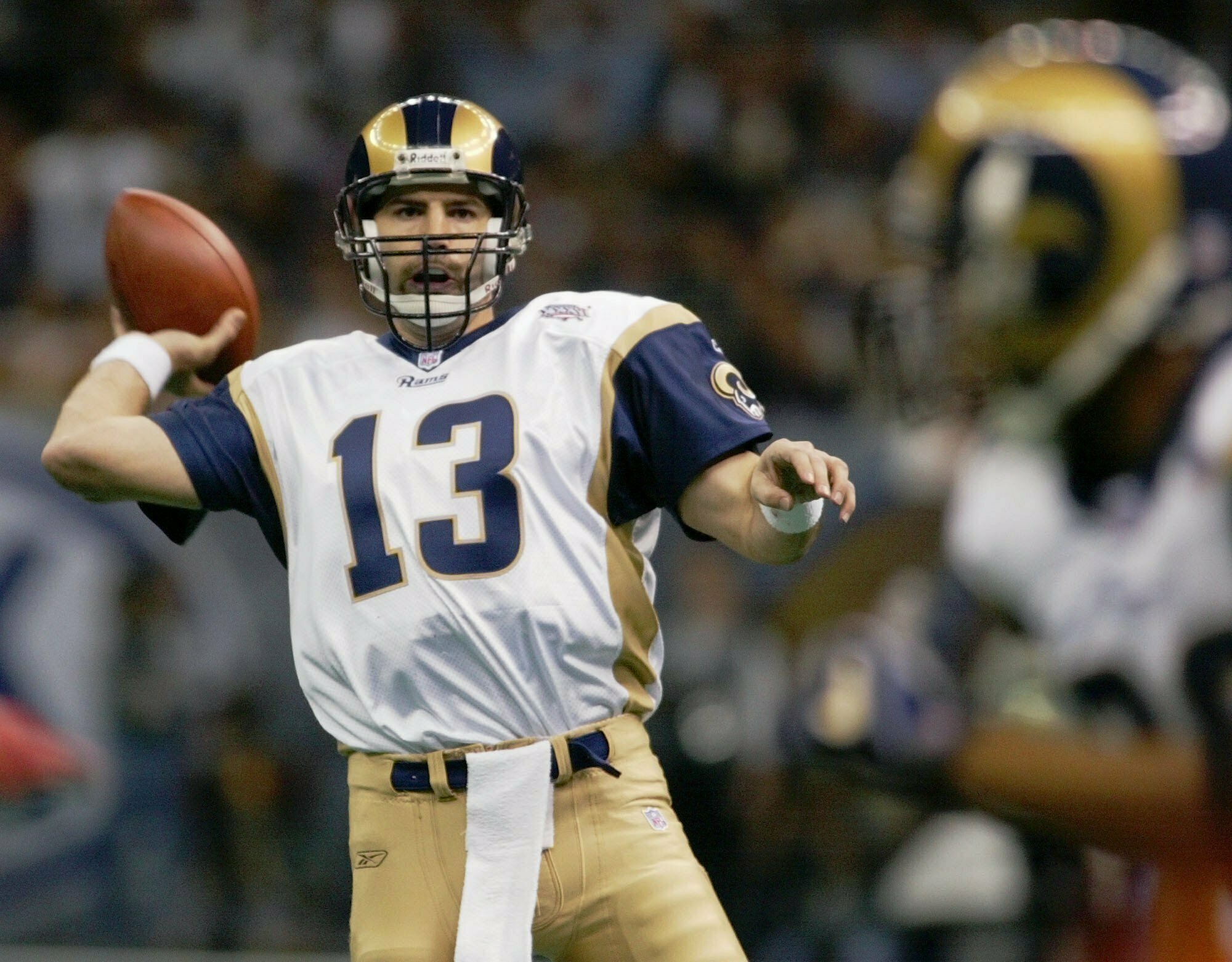
The head-spinning offenses NFL fans are enamored of and will watch in the Super Bowl in Atlanta share their explosiveness with the previous team to win the big game in the ATL.
The Greatest Show On Turf.
Yes, at the turn of the century, there was a group that shared so many light-em-up traits with these Rams and Patriots. The St. Louis Rams under of all people, Dick Vermeil — for decades a defense-minded coach — employed a quick-strike scheme with a resourceful quarterback, game-breaking receivers, a Hall of Fame running back and an offensive line that could dominate while blocking in the ground game or protecting the passer.
Most of all, that team starring Marshall Faulk, Kurt Warner, Isaac Bruce, Torry Holt and a group of lesser knowns embraced the attitude of attacking a defense from the first snap until the last.
They weren’t as workmanlike as the Patriots can be, and they didn’t have a rising star overseeing it such as Sean McVay with the current Rams. What the 1999 Rams brought to the Super Bowl in early 2000 was a killer instinct when they had the ball that both of the teams who will meet on Feb. 3 also possess — though not as spectacularly.
“That team and that era, football kind of saw everyone with a mindset of 3 yards and a cloud of dust in December and January, and you had to be able to run the football to win was kind of the mantra,” says Warner, who entered the Pro Football Hall of Fame in 2017. “We were one of the first to show you can win throwing first. I guess that is all relative with such an extremely talented team because Marshall ran for almost 1,400 yards.
“But if you think about it, we sort of started to usher in the new age, and fantasy football, and the fan bases of not just die-hards. I think it became a new era of what the NFL would be about and what people would be seeing. That led to where we are at: people love offense and love to see scoring. Even a lot of the rules are kind of catered to allowing a little more freedom to do that.”
The freedom is so, well, free that this year, the NFL set records for touchdowns with 1,371, beating the previous mark in 2013 by 33; and was second to 2013 in points with 11,952.
Three teams — the Chiefs (35.3, the Rams (32.9) and the Saints (31.5) — averaged at least 30 points per game. Kansas City scored 565 points, third most in NFL history.
When the St. Louis Rams were partying like it was 1999, they scored 526 points; ranked first in yards, yards passing, and TD passes; and were second in yards rushing per attempt. Faulk rushed for 1,381 yards and seven touchdowns, caught 87 balls for 1,087 yards, with five more TDs, and was the NFL Offensive Player of the Year for the first of three straight seasons.
All Warner did was win the first of his two league MVP honors. Previously an obscure backup whose best work had come in Arena Football, Warner stepped in when starter Trent Green tore up his knee in the preseason. His rise to prominence wasn’t exactly projected at that point.
“In college at Northern Iowa, we played a wide-open offense a lot, which played into my skillset,” Warner says. “When I played Arena Football, we scored 60 to 70 points a game. So my mindset in the NFL was not we are going to score 25 or 30 points, but every time we touch the ball we are supposed to score. Why do we have to punt? If we punt, what are we doing wrong?”
That philosophy certainly contradicted Vermeil’s previous approach. To his everlasting credit, though, Vermeil recognized what he had on offense. And he also went 5-11, then 4-12 in his previous two years in charge in St. Louis. So winning immediately was a priority for the veteran coach to keep his job.
So he turned loose coordinator Mike Martz and the rest of the offense.
“The talent might have been a bit unrefined, but it was there,” Vermeil has said. “It was our belief we could be productive on offense, but does anyone really expect to be that productive? I am not sure of that.”
Well, Warner did.
“I never really saw the game a whole lot differently,” he says. “I was so used to going on offense and throw the ball and score and throw some more and score. It kind of led right into what we did with the Rams and what we accomplished.”
What they accomplished was the forerunner of what we see now week in and week out in the NFL. You know, 5,000-yard passers, 50-TD QBs, and the kind of numbers that thrill fantasy players everywhere.
“We had success early, and any time you want to change something … what do you do if you do not have success right away? That success allows you that ability to keep going, to say, ‘Let’s see how sustainable this can be.’”
It’s lasted nearly two decades, with no signs of abating.
















